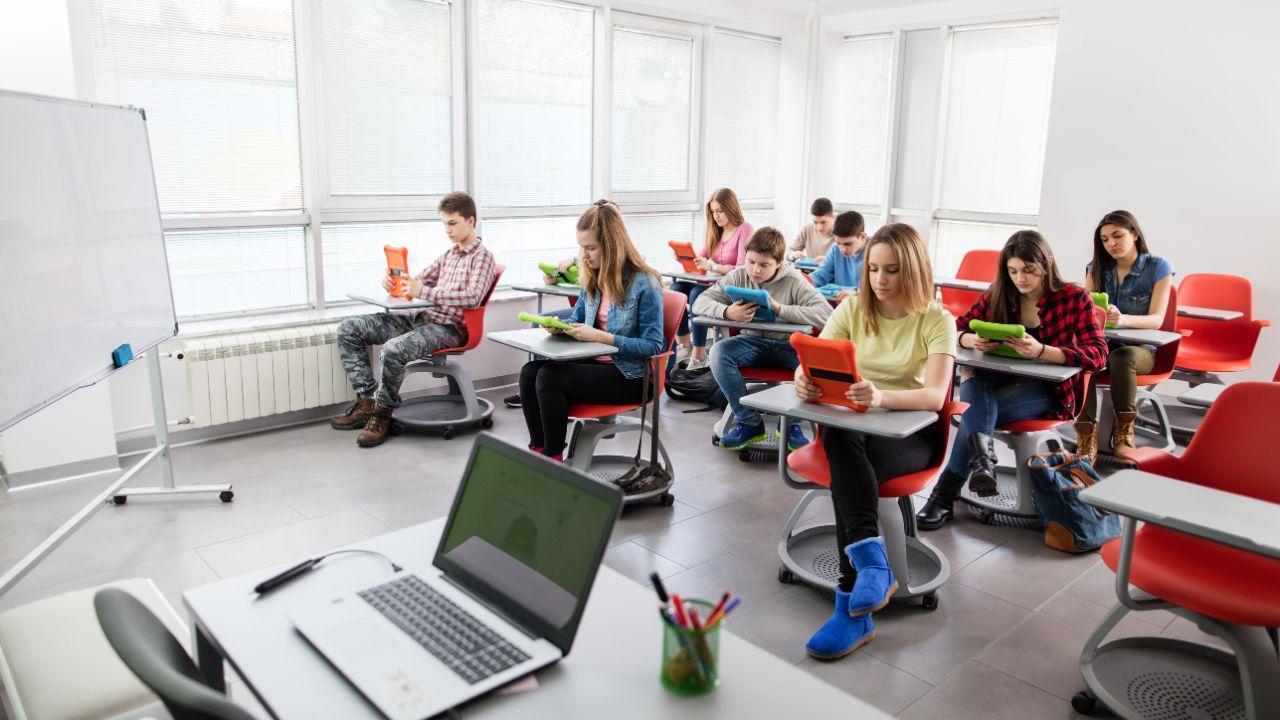
Post by : Vansh
The way we teach and learn has changed dramatically in recent years. Traditional classrooms with blackboards and textbooks are now being replaced—or complemented—by smartboards, tablets, virtual reality, and online platforms. This shift, known as the digital classroom, is more than just an upgrade in tools. It’s a complete transformation in how students are being prepared for a future deeply shaped by technology.
The digital classroom: preparing students for a tech-driven world is not just a concept for the future—it’s already here, reshaping the educational experience and redefining what it means to be ready for tomorrow’s opportunities.
A digital classroom is a technology-enabled learning environment where teachers and students use digital tools to interact, collaborate, and engage with content. It blends traditional teaching methods with digital resources such as online lessons, interactive software, virtual simulations, cloud-based platforms, and even artificial intelligence.
These classrooms can exist in physical schools with digital integration or as entirely online settings. Either way, the goal is to provide students with skills, flexibility, and experiences that align with the demands of today’s digital economy.
In a world increasingly dominated by technology, preparing students for a tech-driven world is no longer optional—it’s essential. From AI and automation to data analysis and cloud computing, nearly every industry is being reshaped by digital innovation.
The digital classroom equips students with foundational tech skills, including typing, coding, using cloud software, and navigating digital communication platforms. But more importantly, it teaches them how to think critically, solve problems, and collaborate in a virtual space—skills that are crucial in modern workplaces.
A wide range of tools and platforms are at the heart of digital education. Learning Management Systems (LMS) like Google Classroom, Microsoft Teams, and Moodle help teachers organize content, track progress, and engage students remotely.
Interactive apps like Kahoot!, Quizizz, and Padlet make learning fun and allow real-time feedback. Virtual reality tools allow students to explore places like the Great Wall of China or the surface of Mars—all from their desks. AI-based tools offer personalized learning paths by adjusting content based on student performance.
Moreover, cloud-based platforms allow students to work on group projects, share ideas, and submit assignments from anywhere, promoting collaboration beyond classroom walls.
Teachers play a central role in the success of digital classrooms. Contrary to the myth that technology replaces educators, it actually empowers them. With access to real-time analytics, teachers can tailor lessons to suit each student’s needs. They can identify learning gaps quickly, provide targeted support, and diversify their teaching styles using multimedia resources.
Professional development programs and online training are also helping teachers become more comfortable with digital tools. This not only improves their tech skills but also boosts their confidence in using new methods to enhance learning outcomes.
One of the major advantages of digital classrooms is personalized learning. Not every student learns the same way or at the same speed. Technology allows educators to customize lesson plans and offer students multiple ways to learn—videos, interactive exercises, quizzes, and reading materials.
Digital classrooms are also more inclusive. Students with disabilities can benefit from text-to-speech tools, screen readers, subtitles, and other assistive technologies. This ensures every student gets the opportunity to succeed, regardless of their abilities.
In traditional classrooms, students often wait days or weeks for feedback. In a digital classroom, assessment is immediate. Whether it’s a quiz, written assignment, or project submission, students receive instant insights on their performance.
This helps them understand their mistakes, make improvements quickly, and build confidence. For teachers, it provides valuable data to improve lessons and track student progress in real time.
The digital classroom is not just about school—it’s about preparing students for the future. Many careers now demand proficiency in digital skills like coding, design, data analysis, or digital communication.
Even roles that aren’t tech-specific often require the use of digital tools, video conferencing, cloud storage, or project management platforms. By growing up in a digital learning environment, students become fluent in the language of technology and better prepared to navigate the modern workplace.
While digital classrooms offer many benefits, there are also challenges. Not all students have access to reliable internet or devices, especially in rural or low-income areas. Teachers may face a learning curve in adapting to new technologies, and data privacy remains a major concern.
To make digital education successful, schools and governments must invest in infrastructure, training, and equitable access. Ensuring every student has the tools they need is critical for creating a level playing field.
The future of education is digital, dynamic, and inclusive. With ongoing advances in artificial intelligence, virtual reality, and cloud computing, digital classrooms will continue to evolve. They will become even more interactive, engaging, and tailored to individual learning needs.
As students step into a world driven by rapid technological change, classrooms must evolve with them. The digital classroom: preparing students for a tech-driven world is not just about using new tools—it’s about creating a mindset of innovation, adaptability, and continuous learning.
This article is intended for informational and educational purposes only. MiddleEastBulletin does not guarantee the accuracy of all third-party data or future projections mentioned. Readers are advised to verify information through official sources before making any decisions










Pageau's Overtime Goal Propels Islanders to 4-3 Victory Over Golden Knights
In a thrilling overtime finish, Jean-Gabriel Pageau leads the Islanders past the Golden Knights 4-3,

MLB Awards: deGrom and Acuna Jr. Shine as Comeback Players
Jacob deGrom and Ronald Acuna Jr. celebrated MLB Comeback Player Awards, alongside Ohtani and Judge

Portugal Confronts Ireland in Pivotal World Cup Qualifier
Portugal, led by Cristiano Ronaldo, faces Ireland in a vital Group F World Cup qualifier that could

Haaland's Brilliance Leads Norway to 4-1 Victory Against Estonia
Erling Haaland showcases leadership as Norway crushes Estonia 4-1, boosting their World Cup ambition

Hawks Triumph Over Jazz; Suns and Raptors Secure Victories
Hawks' Onyeka Okongwu and Jalen Johnson lead in a thrilling win against Jazz; Suns and Raptors also

Indian Men's Recurve Team Clinches First Asian Gold in Nearly Two Decades
The Indian men's recurve team triumphed over South Korea, securing their first Asian gold in 18 year